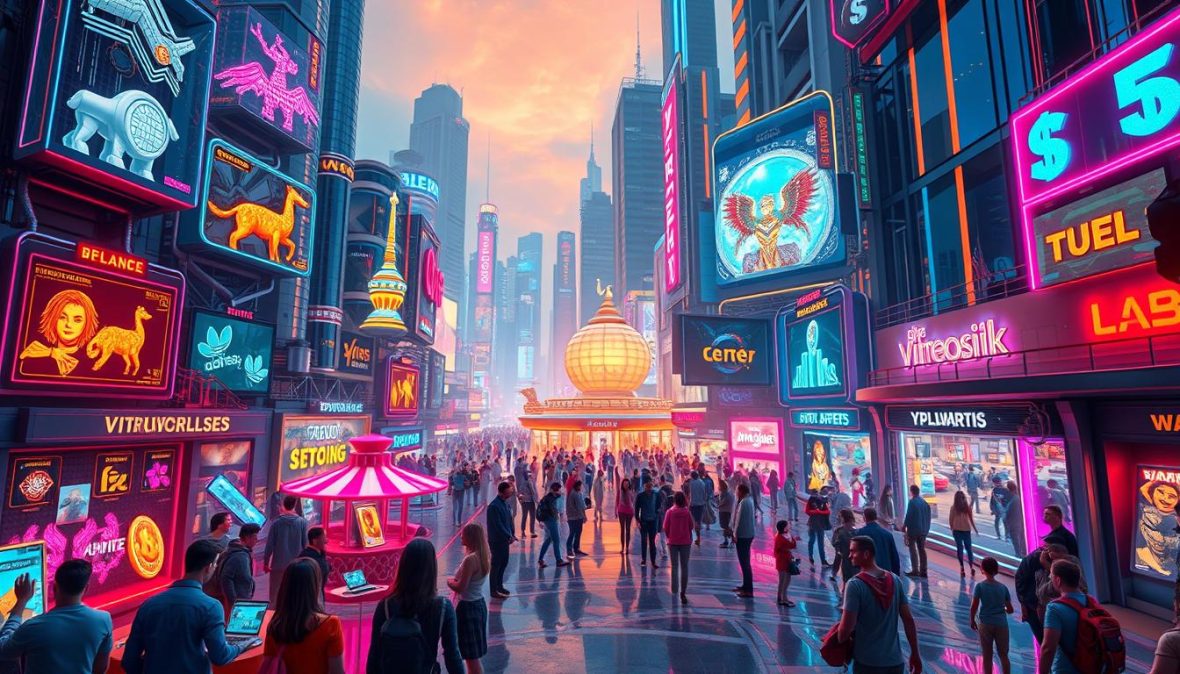Meta Digital Assets: Explore Virtual Ownership

Meta digital assets are transforming the landscape of virtual ownership and digital economies. This post explores the world of NFTs, blockchain technology, and the metaverse, highlighting opportunities and challenges in this rapidly evolving space.
Introduction to Meta Digital Assets
Meta digital assets represent a new frontier in digital ownership, encompassing virtual real estate, digital collectibles, and unique artworks. These assets are secured and authenticated through blockchain technology, ensuring their uniqueness and protecting against unauthorized replication.
Key developments in this space include:
- Facebook’s rebranding to Meta, signaling a major shift towards metaverse development
- The rise of virtual land prices, with some metaverse properties selling for tens of thousands of dollars
- Increasing adoption of NFTs by major brands and celebrities
NFTs and Their Role in the Metaverse
Non-fungible tokens (NFTs) serve as the backbone for ownership in virtual worlds. They provide a way to prove ownership of digital assets, enabling secure trading and monetization of virtual experiences.
Key aspects of NFTs in the metaverse include:
- Unique identification and ownership of digital items
- Ability to buy, sell, and trade virtual assets securely
- Creation of new economic opportunities in virtual spaces
Blockchain Technology and Digital Asset Management
Blockchain technology underpins the security and authenticity of meta digital assets. It provides a transparent, immutable record of ownership and transactions.
Benefits of blockchain for digital assets:
- Enhanced security and fraud prevention
- Decentralized ownership records
- Automated transactions through smart contracts
Types of Meta Digital Assets
The metaverse hosts a variety of digital asset types:
- Virtual Real Estate: Parcels of land in platforms like Decentraland or The Sandbox
- Digital Collectibles: Unique items often used in games or as status symbols
- Digital Art: One-of-a-kind or limited edition artworks
Economic Impact of NFTs in Virtual Worlds
NFTs are reshaping digital economies by:
- Creating new revenue streams for creators and businesses
- Enabling investment opportunities in virtual assets
- Driving user engagement and activity in metaverse platforms
Creating and Minting NFTs
The process of creating and minting NFTs involves:
- Designing or creating the digital asset
- Choosing a blockchain platform (e.g., Ethereum, Solana)
- Minting the NFT through a marketplace or custom smart contract
- Listing the NFT for sale or distribution
Digital Asset Optimization
To maximize the value of digital assets:
- Use SEO metadata to improve discoverability
- Implement robust metadata management for better organization
- Analyze performance metrics to refine strategies
The Transition from Web2 to Web3
The shift to Web3 technologies is characterized by:
- Increased decentralization and user control
- Greater emphasis on digital wallets and personal data ownership
- New models for online interaction and commerce
Challenges and Future Outlook
The meta digital asset space faces several challenges:
- Regulatory uncertainty
- Technical barriers to entry
- Market volatility and speculation
However, the future looks promising with continued innovation and mainstream adoption on the horizon.
Conclusion
Meta digital assets represent a paradigm shift in how we conceive of ownership in the digital realm. As the technology matures and adoption grows, we can expect to see transformative impacts across industries and in our daily digital interactions.
To stay ahead in this rapidly evolving space, it’s crucial to stay informed about the latest developments and to approach opportunities with both enthusiasm and caution.
FAQ
What are meta digital assets?
Meta digital assets are virtual items or properties that exist in digital spaces like the metaverse. They include things like virtual real estate, digital art, and collectibles, all secured by blockchain technology.
How do NFTs function within the metaverse?
NFTs serve as proof of ownership for digital items in the metaverse. They allow for unique, non-interchangeable tokens that represent ownership of specific digital assets, enabling secure trading and ownership of virtual goods.
How does blockchain technology secure digital assets?
Blockchain technology uses cryptographic techniques to create a tamper-proof record of ownership and transactions. This provides a transparent and secure way to verify the authenticity and ownership of digital assets.
What types of digital assets can be owned in the metaverse?
In the metaverse, you can own various types of digital assets including virtual land, collectibles, artwork, and in-game items. These can be bought, sold, and traded securely using NFTs and blockchain technology.
What are the economic implications of NFTs?
NFTs have significant economic implications for the virtual economy. They enable monetization of digital experiences, create new investment opportunities, but also come with risks such as market volatility and challenges in establishing ownership terms.
